Frequent persons on Iran's street signs
countries
38 names / 860 streets
Ruhollah Khomeini
 149
Ayatollah Ruhollah Musavi Khomeini was an Iranian Islamic revolutionary, politician, and religious leader who served as the first supreme leader of Iran from 1979 until his death in 1989. He was the...
149
Ayatollah Ruhollah Musavi Khomeini was an Iranian Islamic revolutionary, politician, and religious leader who served as the first supreme leader of Iran from 1979 until his death in 1989. He was the...
Morteza Motahhari
 56
Morteza Motahhari was an Iranian Twelver Shia scholar, philosopher, lecturer. Motahhari is considered to have an important influence on the ideologies of the Islamic Republic, among others. He was a...
56
Morteza Motahhari was an Iranian Twelver Shia scholar, philosopher, lecturer. Motahhari is considered to have an important influence on the ideologies of the Islamic Republic, among others. He was a...
Mahmoud Taleghani
 51
Sayyid Mahmoud Alaei Taleghani was an Iranian theologian, Muslim reformer, democracy advocate and a senior Shi'a Islamic Scholar and thinker of Iran. and a leader in his own right of the movement...
51
Sayyid Mahmoud Alaei Taleghani was an Iranian theologian, Muslim reformer, democracy advocate and a senior Shi'a Islamic Scholar and thinker of Iran. and a leader in his own right of the movement...
Mohammad Beheshti
 46
Sayyed Mohammad Hosseini Beheshti was an Iranian jurist, philosopher, cleric and politician who was known as the second person in the political hierarchy of Iran after the Revolution. Beheshti is...
46
Sayyed Mohammad Hosseini Beheshti was an Iranian jurist, philosopher, cleric and politician who was known as the second person in the political hierarchy of Iran after the Revolution. Beheshti is...
Mahdi
 38
The Mahdi is a prominent figure in Islamic eschatology who is believed to appear at the End of Time to rid the world of evil and injustice. He is said to be a descendant of Muhammad, who will appear...
38
The Mahdi is a prominent figure in Islamic eschatology who is believed to appear at the End of Time to rid the world of evil and injustice. He is said to be a descendant of Muhammad, who will appear...
سید حسن مدرس
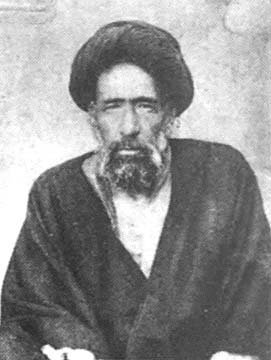 37
سید حسن طباطبایی زواره مشهور به مدرّس سیاستمدار و روحانی شیعه ایرانی بود.
37
سید حسن طباطبایی زواره مشهور به مدرّس سیاستمدار و روحانی شیعه ایرانی بود.
Ali Shariati
 34
Ali Shariati Mazinani was an Iranian revolutionary and sociologist who focused on the sociology of religion. He is held as one of the most influential Iranian intellectuals of the 20th century, and...
34
Ali Shariati Mazinani was an Iranian revolutionary and sociologist who focused on the sociology of religion. He is held as one of the most influential Iranian intellectuals of the 20th century, and...
Ali al-Rida
 31
Ali ibn Musa al-Rida, also known as Abū al-Ḥasan al-Thānī, was a descendant of the Islamic prophet Muhammad, and the eighth imam in Twelver Shia Islam, succeeding his father, Musa al-Kazim. He is...
31
Ali ibn Musa al-Rida, also known as Abū al-Ḥasan al-Thānī, was a descendant of the Islamic prophet Muhammad, and the eighth imam in Twelver Shia Islam, succeeding his father, Musa al-Kazim. He is...
Mostafa Chamran
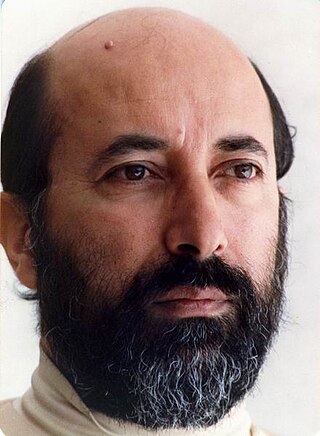 29
Mostafa Chamran Save'ei was an Iranian physicist, politician, commander and guerrilla fighter who served as the first defense minister of post-revolutionary Iran and a member of parliament as well as...
29
Mostafa Chamran Save'ei was an Iranian physicist, politician, commander and guerrilla fighter who served as the first defense minister of post-revolutionary Iran and a member of parliament as well as...
Hafez
 28
Khājeh Shams-od-Dīn Moḥammad Ḥāfeẓ-e Shīrāzī, known by his pen name Hafez or Hafiz, was a Persian lyric poet whose collected works are regarded by many Iranians as one of the highest pinnacles of...
28
Khājeh Shams-od-Dīn Moḥammad Ḥāfeẓ-e Shīrāzī, known by his pen name Hafez or Hafiz, was a Persian lyric poet whose collected works are regarded by many Iranians as one of the highest pinnacles of...
Saadi Shirazi
 27
Saadi Shīrāzī, better known by his pen name Saadi, also known as Sadi of Shiraz, was a Persian poet and prose writer of the medieval period. He is recognized for the quality of his writings and for...
27
Saadi Shīrāzī, better known by his pen name Saadi, also known as Sadi of Shiraz, was a Persian poet and prose writer of the medieval period. He is recognized for the quality of his writings and for...
Husayn ibn Ali
 26
Husayn ibn Ali was an Alid political and religious leader. The grandson of the Islamic prophet Muhammad and the son of Ali ibn Abi Talib and Muhammad's daughter Fatima, as well as a younger brother...
26
Husayn ibn Ali was an Alid political and religious leader. The grandson of the Islamic prophet Muhammad and the son of Ali ibn Abi Talib and Muhammad's daughter Fatima, as well as a younger brother...
Amir Kabir
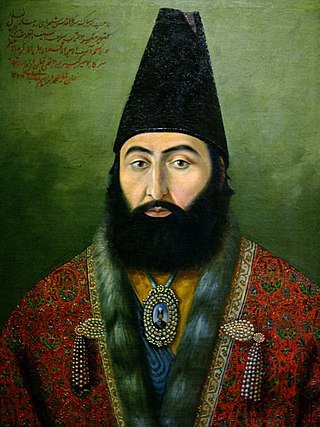 21
Mirza Taghi Khan-e Farahani, better known as Amir Kabir, was chief minister to Naser al-Din Shah Qajar for the first three years of his reign. He is widely considered to be "Iran's first reformer", a...
21
Mirza Taghi Khan-e Farahani, better known as Amir Kabir, was chief minister to Naser al-Din Shah Qajar for the first three years of his reign. He is widely considered to be "Iran's first reformer", a...
Mohammad-Javad Bahonar
 20
Mohammad-Javad Bahonar was a Shia Iranian theologian and politician who served as the Prime Minister of Iran for less than one month in August 1981. Bahonar and other members of Mohammad-Ali Rajai's...
20
Mohammad-Javad Bahonar was a Shia Iranian theologian and politician who served as the Prime Minister of Iran for less than one month in August 1981. Bahonar and other members of Mohammad-Ali Rajai's...
Navvab Safavi
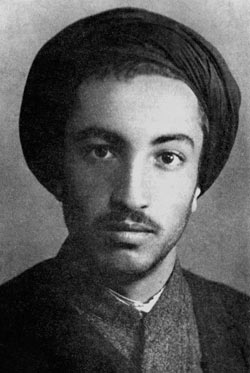 20
Sayyid Mojtaba Mir-Lohi, more commonly known as Navvab Safavi, was an Iranian Shia cleric and founder of the Fada'iyan-e Islam group. He played a role in assassinations of Abdolhossein Hazhir, Haj...
20
Sayyid Mojtaba Mir-Lohi, more commonly known as Navvab Safavi, was an Iranian Shia cleric and founder of the Fada'iyan-e Islam group. He played a role in assassinations of Abdolhossein Hazhir, Haj...
Mohammad-Ali Rajai
 19
Mohammad-Ali Rajai was the second president of Iran from 2 August 1981 until his death. He served also as prime minister under Abolhassan Banisadr. In addition, Rajai was minister of foreign affairs...
19
Mohammad-Ali Rajai was the second president of Iran from 2 August 1981 until his death. He served also as prime minister under Abolhassan Banisadr. In addition, Rajai was minister of foreign affairs...
Omar Khayyam
 17
Ghiyāth al-Dīn Abū al-Fatḥ ʿUmar ibn Ibrāhīm Nīsābūrī, commonly known as Omar Khayyam, was a Persian polymath, known for his contributions to mathematics, astronomy, philosophy, and poetry. He was...
17
Ghiyāth al-Dīn Abū al-Fatḥ ʿUmar ibn Ibrāhīm Nīsābūrī, commonly known as Omar Khayyam, was a Persian polymath, known for his contributions to mathematics, astronomy, philosophy, and poetry. He was...
Mostafa Khomeini
 15
Mostafa Khomeini was an Iranian cleric and the eldest son of Ayatollah Khomeini. He died before the Iranian Revolution.
15
Mostafa Khomeini was an Iranian cleric and the eldest son of Ayatollah Khomeini. He died before the Iranian Revolution.
Salman the Persian
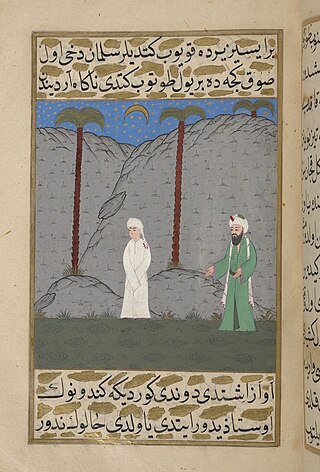 15
Salman al-Farisi was a Persian religious scholar and one of the companions of Muhammad. As a practicing Zoroastrian, he dedicated much of his early life to studying to become a magus, though he later...
15
Salman al-Farisi was a Persian religious scholar and one of the companions of Muhammad. As a practicing Zoroastrian, he dedicated much of his early life to studying to become a magus, though he later...
Avicenna
 14
Ibn Sina, commonly known in the West as Avicenna, was a preeminent philosopher and physician of the Muslim world, flourishing during the Islamic Golden Age, serving in the courts of various Iranian...
14
Ibn Sina, commonly known in the West as Avicenna, was a preeminent philosopher and physician of the Muslim world, flourishing during the Islamic Golden Age, serving in the courts of various Iranian...
Ali
 13
Ali ibn Abi Talib was the cousin and son-in-law of the Islamic prophet Muhammad, and was the fourth Rashidun caliph who ruled from 656 to 661, as well as the first Shia imam. Born to Abu Talib ibn...
13
Ali ibn Abi Talib was the cousin and son-in-law of the Islamic prophet Muhammad, and was the fourth Rashidun caliph who ruled from 656 to 661, as well as the first Shia imam. Born to Abu Talib ibn...
Muhammad al-Mahdi
 12
Muhammad ibn Hasan al-Mahdi is believed by the Twelver Shia to be the last of the Twelve Imams and the eschatological Mahdi, who will emerge in the end of time to establish peace and justice and...
12
Muhammad ibn Hasan al-Mahdi is believed by the Twelver Shia to be the last of the Twelve Imams and the eschatological Mahdi, who will emerge in the end of time to establish peace and justice and...
Abol-Ghasem Kashani
 12
Sayyed Abol-Ghasem Mostafavi-Kashani was an Iranian politician and Shia Marja. He played an important role in the 1953 coup in Iran and the overthrow of Prime Minister Mohammad Mosaddegh.
12
Sayyed Abol-Ghasem Mostafavi-Kashani was an Iranian politician and Shia Marja. He played an important role in the 1953 coup in Iran and the overthrow of Prime Minister Mohammad Mosaddegh.
Mulla Sadra
 11
Ṣadr ad-Dīn Muḥammad Shīrāzī, more commonly known as Mullā Ṣadrā, was a Persian Twelver Shi'i Islamic mystic, philosopher, theologian, and ‘Ālim who led the Iranian cultural renaissance in the 17th...
11
Ṣadr ad-Dīn Muḥammad Shīrāzī, more commonly known as Mullā Ṣadrā, was a Persian Twelver Shi'i Islamic mystic, philosopher, theologian, and ‘Ālim who led the Iranian cultural renaissance in the 17th...
Mohammad-Ali Rajai
 11
Mohammad-Ali Rajai was the second president of Iran from 2 August 1981 until his death. He served also as prime minister under Abolhassan Banisadr. In addition, Rajai was minister of foreign affairs...
11
Mohammad-Ali Rajai was the second president of Iran from 2 August 1981 until his death. He served also as prime minister under Abolhassan Banisadr. In addition, Rajai was minister of foreign affairs...
Rumi
 11
Jalāl al-Dīn Muḥammad Rūmī, or simply Rumi, was a 13th-century poet, Hanafi faqih, Islamic scholar, Maturidi theologian and Sufi mystic originally from Greater Khorasan in Greater Iran.
11
Jalāl al-Dīn Muḥammad Rūmī, or simply Rumi, was a 13th-century poet, Hanafi faqih, Islamic scholar, Maturidi theologian and Sufi mystic originally from Greater Khorasan in Greater Iran.
Sattar Khan
 10
Sattar Khan, honorarily titled Sardār-e Melli was a pivotal figure in the Iranian Constitutional Revolution and is considered a national hero by the Iranian people.
10
Sattar Khan, honorarily titled Sardār-e Melli was a pivotal figure in the Iranian Constitutional Revolution and is considered a national hero by the Iranian people.
Mohammad-Hossein Shahriar
 10
Seyyed Mohammad-Hossein Behjat Tabrizi, known by his pen name Shahriar, was an Iranian poet who composed works in both Azerbaijani and Persian.
His most important work, Heydar Babaya Salam, is...
10
Seyyed Mohammad-Hossein Behjat Tabrizi, known by his pen name Shahriar, was an Iranian poet who composed works in both Azerbaijani and Persian.
His most important work, Heydar Babaya Salam, is...
Rudaki
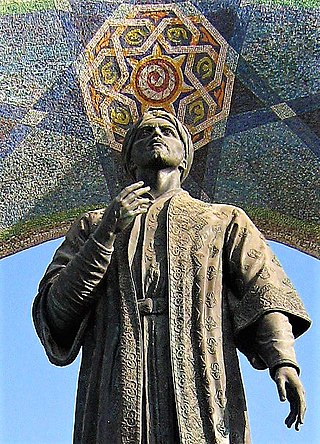 9
Rudaki was a poet, singer, and musician who is regarded as the first major poet to write in New Persian. A court poet under the Samanids, he reportedly composed more than 180,000 verses, yet only a...
9
Rudaki was a poet, singer, and musician who is regarded as the first major poet to write in New Persian. A court poet under the Samanids, he reportedly composed more than 180,000 verses, yet only a...
Abu Bakr al-Razi
 9
Abū Bakr al-Rāzī, c. 864 or 865–925 or 935 CE, often known as (al-)Razi or by his Latin name Rhazes, also rendered Rhasis, was a Persian physician, philosopher and alchemist who lived during the...
9
Abū Bakr al-Rāzī, c. 864 or 865–925 or 935 CE, often known as (al-)Razi or by his Latin name Rhazes, also rendered Rhasis, was a Persian physician, philosopher and alchemist who lived during the...
Mir Damad
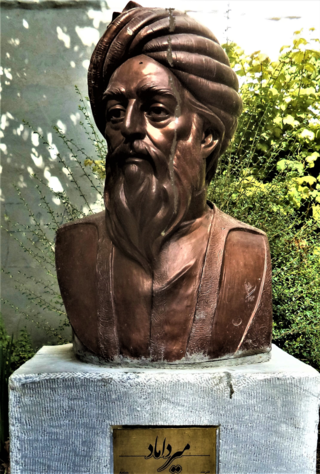 9
Mir Damad, known also as Mir Mohammad Baqer Esterabadi, or Asterabadi, was a Twelver Shia Iranian philosopher in the Neoplatonizing Islamic Peripatetic traditions of Avicenna. He also was a...
9
Mir Damad, known also as Mir Mohammad Baqer Esterabadi, or Asterabadi, was a Twelver Shia Iranian philosopher in the Neoplatonizing Islamic Peripatetic traditions of Avicenna. He also was a...
Mahmoud Taleghani
 9
Sayyid Mahmoud Alaei Taleghani was an Iranian theologian, Muslim reformer, democracy advocate and a senior Shi'a Islamic Scholar and thinker of Iran. and a leader in his own right of the movement...
9
Sayyid Mahmoud Alaei Taleghani was an Iranian theologian, Muslim reformer, democracy advocate and a senior Shi'a Islamic Scholar and thinker of Iran. and a leader in his own right of the movement...
Ali Sayad Shirazi
 8
Ali Sayyad Shirazi was an Iranian military officer. He served as commander of the Iranian Ground Forces during the Iran–Iraq War and was a key military figure during the war. He was assassinated by...
8
Ali Sayyad Shirazi was an Iranian military officer. He served as commander of the Iranian Ground Forces during the Iran–Iraq War and was a key military figure during the war. He was assassinated by...
Mohammad Beheshti
 8
Sayyed Mohammad Hosseini Beheshti was an Iranian jurist, philosopher, cleric and politician who was known as the second person in the political hierarchy of Iran after the Revolution. Beheshti is...
8
Sayyed Mohammad Hosseini Beheshti was an Iranian jurist, philosopher, cleric and politician who was known as the second person in the political hierarchy of Iran after the Revolution. Beheshti is...
Mostafa Chamran
 8
Mostafa Chamran Save'ei was an Iranian physicist, politician, commander and guerrilla fighter who served as the first defense minister of post-revolutionary Iran and a member of parliament as well as...
8
Mostafa Chamran Save'ei was an Iranian physicist, politician, commander and guerrilla fighter who served as the first defense minister of post-revolutionary Iran and a member of parliament as well as...
Abol-Ghasem Kashani
 6
Sayyed Abol-Ghasem Mostafavi-Kashani was an Iranian politician and Shia Marja. He played an important role in the 1953 coup in Iran and the overthrow of Prime Minister Mohammad Mosaddegh.
6
Sayyed Abol-Ghasem Mostafavi-Kashani was an Iranian politician and Shia Marja. He played an important role in the 1953 coup in Iran and the overthrow of Prime Minister Mohammad Mosaddegh.
Morteza Motahhari
 6
Morteza Motahhari was an Iranian Twelver Shia scholar, philosopher, lecturer. Motahhari is considered to have an important influence on the ideologies of the Islamic Republic, among others. He was a...
6
Morteza Motahhari was an Iranian Twelver Shia scholar, philosopher, lecturer. Motahhari is considered to have an important influence on the ideologies of the Islamic Republic, among others. He was a...
سید حسن مدرس
 5
سید حسن طباطبایی زواره مشهور به مدرّس سیاستمدار و روحانی شیعه ایرانی بود.
5
سید حسن طباطبایی زواره مشهور به مدرّس سیاستمدار و روحانی شیعه ایرانی بود.